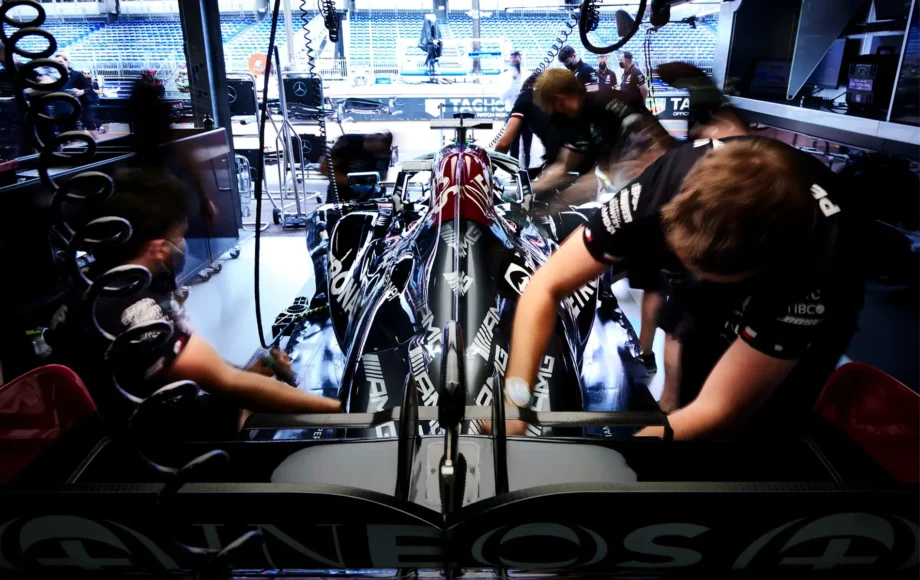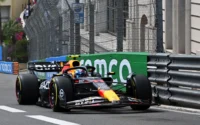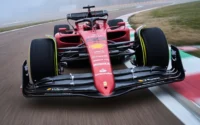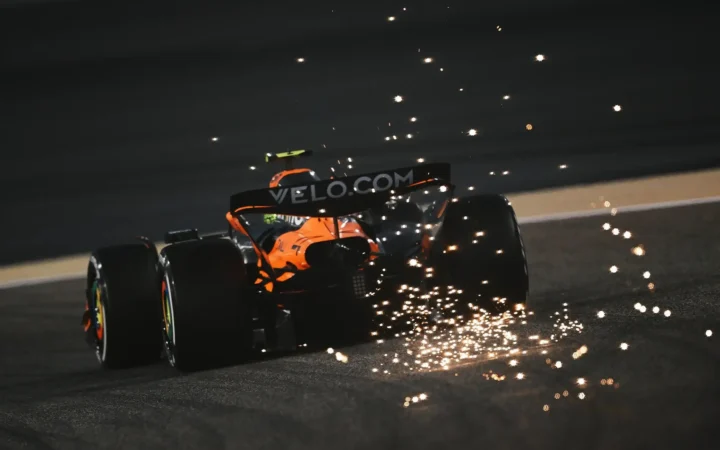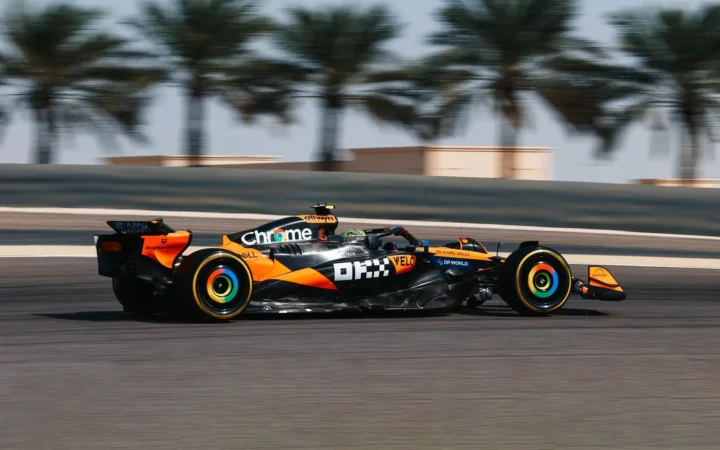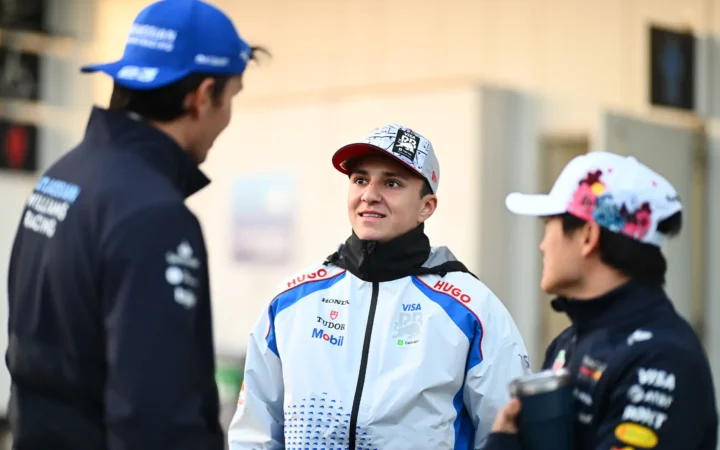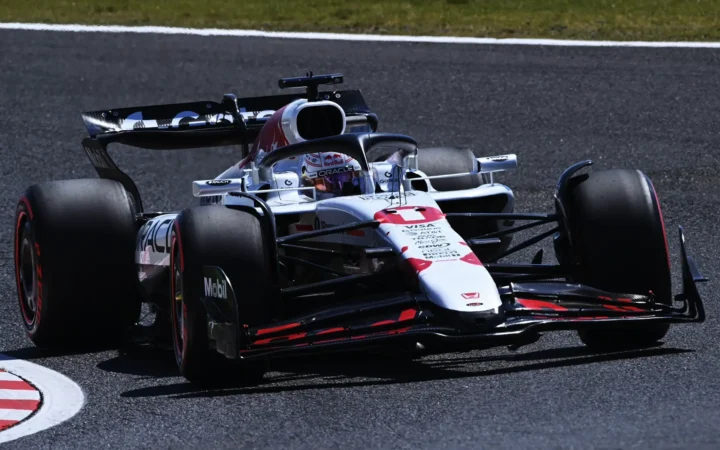As F1 seasons progress, the topic of power units and gearboxes gains momentum due to the limited allocation for each driver. It’s a set of complex rules that can baffle even seasoned fans, but they are also crucial aspects of the sport.
What to know
- The FIA sets strict limits on a driver’s power unit usage at the start of a season.
- If drivers use more power unit elements than the designated number, they face a grid place penalty.
- Drivers also face restrictions on the number of gearbox components they can use in a season.
- Penalties for engines and gearboxes in F1 serve as a means of cost reduction.
In this latest guide, we’ll take a look at these engine and gearbox penalties, and explain how they work, their significance, and how many can be used across the season.
How many components are in an F1 power unit?
A driver’s power unit usage is subject to strict limits set by the FIA at the start of a season. Formula 1 cars are equipped with highly sophisticated engines composed of various components, including the Internal Combustion Engine (ICE), Turbocharger (TC), Motor Generator Unit – Heat (MGU-H), Motor Generator Unit – Kinetic (MGU-K), Energy Store (ES), and Control Electronics (CE), and exhaust system. Each of these components is crucial to the car’s overall performance.
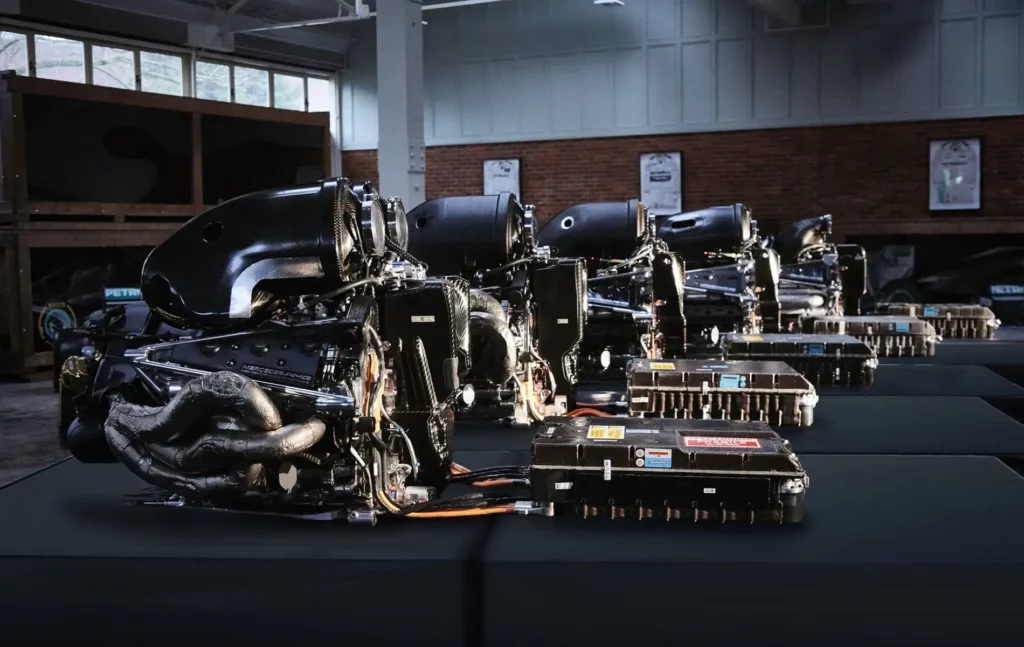
In 2023, drivers were permitted no more than four individual units of ICE, MGU-H, MGU-K, and turbochargers throughout the season. Additionally, they were allowed a maximum of two energy stores and control electronics.
The exhaust system is also subject to eight sets per season, comprising four distinct elements, namely primary left-hand side, primary right-hand side, secondary left-hand side, and secondary right-hand side. These stringent regulations are designed to ensure fairness and maintain a level playing field within the sport.
Before the 2024 season started, at a meeting presided over by F1 president Stefano Domenicali and FIA single-seater director Nikolas Tombazis, there was a consensus to increase the power unit allocation for each driver from four to five for both the 2024 and 2025 seasons.
Power unit component allocation
| Components | 2023 Allocation | 2024 and 2025 Allocation |
|---|---|---|
| Internal combustion engine (ICE) | 4 | 5 |
| Motor generator units-heat (MGU-H) | 4 | 5 |
| Motor generator units-kinetic (MGU-K) | 4 | 5 |
| Turbocharger | 4 | 5 |
| Energy store (ES) | 2 | 2 |
| Control electronics (CE) | 2 | 2 |
| Exhaust | 8 | 8 |
What is the grid penalty for changing engines in F1?
If drivers use more power unit elements than the designated number, they will face a grid place penalty at the first race where each additional element is used. If the allocation of any of the seven elements is exceeded for the first time, a 10-place grid penalty will be enforced. Subsequent violations will result in a five-place grid drop, with all penalties at the same event adding up cumulatively. A driver with a penalty of more than 15 grid places will have to start the race from the back of the grid.
To avoid confusion during 2022’s Italian Grand Prix, the FIA clarified the process for allocating grid positions to drivers who receive 15 or fewer cumulative grid place penalties. These drivers will be given a “temporary” grid position equal to their qualifying classification. For example, if a driver qualifies 10th and has penalties totalling 15 spots, they will be placed in a temporary position of 25th on the grid. If two or more Formula One drivers share the same temporary position, the driver who finished lower in qualifying will retain that position, and the faster driver will be placed immediately ahead. Once the unpenalised classified drivers have been assigned their positions, those in temporary slots will be moved up to complete the grid.
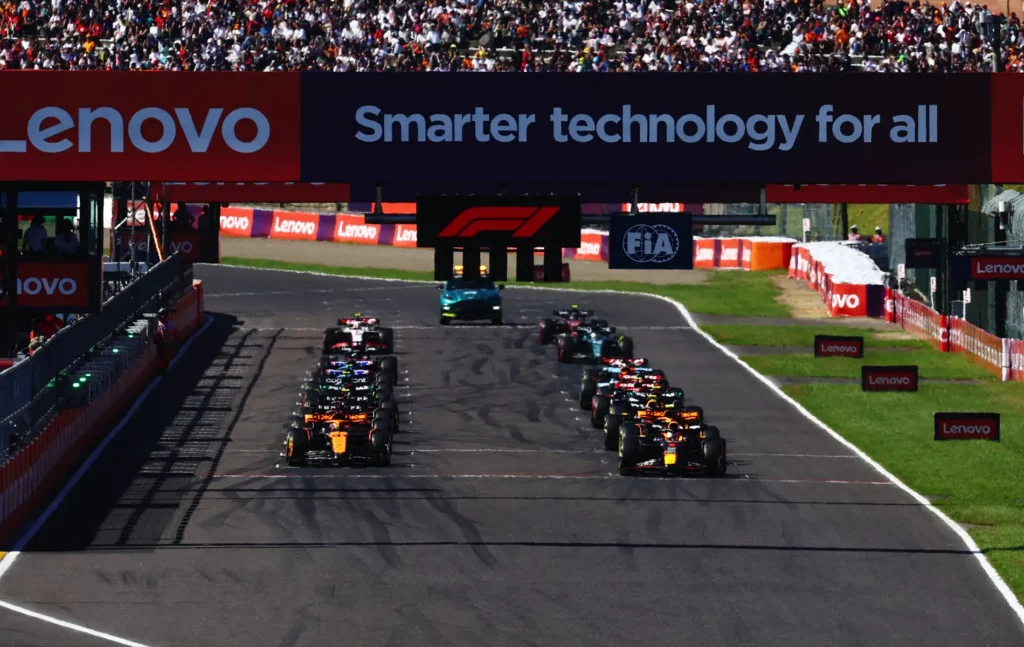
F1 drivers who receive penalties of more than 15 places or those pushed to the back of the grid will start behind all other classified drivers. When a new power unit element is taken, it is considered “used” once the car’s timing transponder confirms that it has left the pit lane during an official session. The power unit and gearbox components are sealed to prevent unauthorised replacement without the FIA’s knowledge. If a team installs more than one of the same elements subject to penalties, only the last element fitted may be used at subsequent events without further penalty.
If a team replaces a driver during the season, their replacement will be treated as the original driver for the purpose of assessing power unit usage. It is important to note that when a new power unit element is taken, it becomes part of the driver’s “pool” for the rest of the season, and parts can be swapped from race to race without penalty. The same three rules apply to gearboxes as well.
How many components are in an F1 gearbox?
Drivers also face restrictions on the number of restricted-number components (RNCs) they can utilise within a single F1 season. These RNCs are components found in the gearbox, distributed between the gearbox case, cassette, gearbox driveline, gear change components, and auxiliary components.
Gearbox component allocation
| Components | 2024 and 2025 Allocation |
|---|---|
| Gearbox case and cassette | 4 |
| Gearbox driveline, gearchange components and auxiliary components | 4 |
Is there a penalty for replacing a gearbox in F1?
Similar to the power units, drivers can have a pool of four gearboxes that can be exchanged throughout the season. However, if a driver surpasses their allotment of either the power unit or gearbox, they will be subject to a grid penalty.
The penalty for the first offence is a deduction of 5 places on the grid, with the same penalty for subsequent violations. If a driver exceeds the allotment of both components simultaneously, they will face a 10-place deduction on the grid.
If a driver and their team face a power unit or gearbox penalty, they may choose to make multiple modifications, resulting in several penalties simultaneously. Although they will experience an initial setback, they can free up their components pool for the rest of the season. Certain race circuits, such as Monza and Spa-Francorchamps, are popular for these large-scale component changes due to their long straights, which make it easier for drivers to regain lost positions while benefiting from fresh components.
Why are there penalties for engines and gearboxes in F1?
Penalties for engines and gearboxes in F1 serve as a means of cost reduction. Previously, Formula One teams would replace engines after every session, resulting in a significant expenditure as multiple units were consumed by each car every year.
Over the years, F1 teams with larger budgets and backing could afford to run their teams like this, but those with smaller and tighter budgets couldn’t, with many exiting F1. Prospective teams also saw this as a barrier to F1 due to the high costs.
To avoid this financial burden, the FIA introduced rules requiring teams to limit the changes they make and would face penalties for exceeding this limit, such as grid drops. These regulations are designed to motivate teams to conserve resources and strive for minimal modifications. It’s also a drive to a more sustainable overall Formula One.
2022 Formula 1 engine freeze
2022 marked the beginning of an engine freeze that will remain in effect until the end of the 2025 season. This freeze involved two sets of components, the first of which was locked in on March 1st 2022 and the second on September 1st 2022.
During the “homologation” period, a manufacturer may request modifications to power unit elements for reliability, safety, cost saving, and minimal incidental changes such as component positioning. These applications must be made in writing to the FIA Technical Department, with evidence of any failures and will be circulated to all power unit manufacturers for comments. If approved, the FIA will inform the power unit manufacturer concerned.
This freeze enables manufacturers to devote their resources to developing new power units for the 2026 F1 World Championship. Similarly, gearboxes are homologated, but modifications are now permitted at the start of each season in the event of unavailability of materials, processes, or proprietary parts for cost savings and to resolve reliability problems.
Frequently asked questions
How much does a F1 engine cost?
It comes as no surprise that the engine is the priciest component in Formula 1. A single turbocharged 1.6-litre V6 engine costs approximately .5 million. Each team is permitted to use a total of three of these engines over the course of the season.
These costs include not only the development and manufacturing of the engine but also the ongoing research and development efforts to improve its performance throughout the season.
It’s important to note that some Formula 1 teams do not typically purchase these engines outright. Instead, they have contracts and partnerships with engine manufacturers who supply them with the engines as part of a larger package deal that may include technical support and collaboration. The cost can vary depending on the specific arrangements between the team and the engine supplier.
What is the highest grid penalty in F1?
The highest grid penalty a Formula 1 driver could incur for a single race due to engine and component changes is typically around 40 to 50 grid places. However, Formula 1 rules and regulations can change over time, and the sport’s governing body can adjust the specific penalty limits of the Fédération Internationale de l’Automobile (FIA).
Do F1 cars use a clutch to change gears?
Formula 1 cars do not use a traditional clutch pedal like a road car with a manual transmission. Instead, they use a type of transmission known as a “seamless-shift gearbox”. These gearboxes are operated electronically and do not require the driver to engage a clutch when changing gears manually.
In a Formula 1 car, the driver uses paddle shifters located on the steering wheel to upshift and downshift. When the driver activates one of these paddles, the electronic control systems in the car manage the clutch and gear engagement automatically, ensuring smooth and rapid gear changes. This allows Formula 1 drivers to change gears quickly and precisely without needing a clutch pedal, enhancing the car’s overall performance.
How many times does an F1 driver change gears in a race?
In a Formula 1 race, a driver’s gear changes vary widely depending on the track’s layout and the specific race strategy employed. However, on average, during a 78-lap race, an F1 driver can execute more than 3,600 gear changes. These rapid shifts are made possible by an onboard computer, which manages this incredible volume of gear changes.
On a circuit with many tight corners and chicanes, F1 drivers may need to change gears more frequently, sometimes multiple times within a single corner. There may be fewer gear changes on a high-speed track with long straights and fewer corners.
While there is no fixed number of gear changes for an F1 driver in a race, they can make thousands of changes during a typical Grand Prix.
Seen in:

